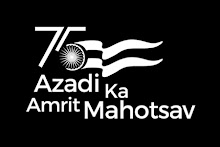 Communications Minister A. Raja on Friday announced the much awaited guidelines for the auction of spectrum, or airwaves, to launch third-generation (3G) mobile phone services in the country.The 3G service will not only allow much faster communications but also a wide range of applications such as high-speed net access, video calls, fast music and video downloads, interactive gaming and global positioning over internet.
Communications Minister A. Raja on Friday announced the much awaited guidelines for the auction of spectrum, or airwaves, to launch third-generation (3G) mobile phone services in the country.The 3G service will not only allow much faster communications but also a wide range of applications such as high-speed net access, video calls, fast music and video downloads, interactive gaming and global positioning over internet."Spectrum in 2.1 GHz band will be allocated for 3G telecom services throughout the country," Raja told a press conference here, adding some 60 MHz of spectrum was available for wireless telephony in the country."We may give licences to up to 10 operators. It depends on the availability of spectrum. Initially, we will have five players. In Delhi and Mumbai, there will be two operators only. The validity of the licence will be 20 years.”
He said a reserve price of Rs.1.6 billion ($40 million) had been fixed for Delhi, Mumbai and all 'A' category circles, half that for Kolkata and 'B' category circles and Rs.300 million ($7.5 million) for category 'C' circles.The base price would add up to Rs.28 billion for an all-India licence and the government expects to earn more than Rs.300 billion ($7.5 billion) from the auction of spectrum for 3G services.
State-run Mahanagar Telephone Nigam Ltd (MTNL) that provides telecom services in Delhi and Mumbai, and Bharat Sanchar Nigam Ltd (BSNL), which caters to the rest of the country, need not bid for spectrum but have to pay the highest price.Raja said his ministry was also in talks with National Security Advisor M.K. Narayanan, who has been entrusted with the task of finding out how much of the spectrum available with the defence forces can be used for civilian purposes."Once the armed forces release spectrum, we may accommodate more operators for 3G services.”
Global telecom companies and new entrants in the industry can also bid but they will have to pay an entry fee for the cost of a telecom licence over and above their bid price for the spectrum auction.
The first 3G networks were rolled out in Japan in 2001 and since then, over 71 countries have adopted some form of the technology.Many mobile phone subscribers in India - who number 286.86 million today - have been keenly awaiting the launch of 3G services.The 3G policy also offers global companies like AT&T, France Telecom, Deutsche Telekom and Japan's NTT DoCoMo, who do not have a presence in India, another opportunity to enter the world's fastest growing telecom market.If they bid successfully for 3G spectrum, the fee of Rs 1,651 crore for a pan-India licence allows them to offer all telecom services such as 2G, landline, broadband and internet, besides 3G.For existing private and public sector service providers, 3G opens up a whole new revenue stream. In the 2G space-mostly voice rock bottom tariffs have ensured one of the world'slowest average realisations per user.With 3G services, they will be able to offer much pricier data rich services.The guidelines state that spectrum would be auctioned in the 450 MHz and 800 MHz band for EVDO (for CDMA players) and in the 1900 MHz band when it is made available. Strict rollout obligations for 3G operators have been put in place to discourage hoarding of spectrum. A licensee that does not meet the rollout obligations after a year is liable to be fines 2.5% of its successful auction bid every quarter and could subsequently loose its allotted spectrum.
The guidelines for Mobile Number Portability, also released by the government today, proposes dividing the country into two zones for implementing the scheme that is prevalent in most mature telecom markets.



No comments:
Post a Comment